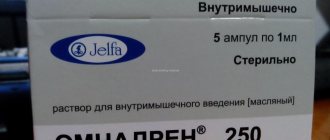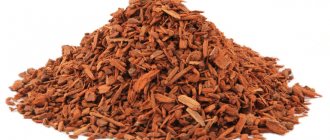Compound
The Metrogyl solution contains the active ingredient metronidazole , as well as: sodium chloride, sodium hydrogen phosphate (anhydrous), citric acid, water.
Metrogyl tablets contain the active ingredient metronidazole , as well as: corn starch, magnesium stearate, colloidal silicon dioxide, hydrogenated castor oil, Opadry II dye, water.
Metrogyl gel includes metronidazole and additional components: propyl parahydroxybenzoate, methyl parahydroxybenzoate, disodium edetate, carbomer 940, sodium hydroxide, propylene glycol, water.
Release form
Currently, Metrogyl solution is produced for intravenous administration, as well as tablets, vaginal gel and gel for external use.
- The solution for intravenous administration can be colorless or pale yellow, transparent, packaged in transparent ampoules of 20 ml (100 mg solution) and in polyethylene bottles of 100 ml (500 mg solution). The containers are placed in cardboard packs.
- Tablets 200 mg - pink, biconvex, film-coated, round, packaged in blisters of 10 pcs., in cardboard packs of 2 blisters.
- Tablets 400 mg - orange, biconvex, film-coated, round, packaged in blisters of 10 pcs., in cardboard packs of 2 blisters.
- Metrogyl vaginal gel is homogeneous, colorless or has a yellow tint, contained in tubes of 30 g.
Metronidazole metrogil trichopolum - composition
composition: 1 tablet contains metronidazole 250 mg;
excipients: pregelatinized starch, hydroxypropyl methylcellulose (hypromellose), croscarmellose sodium, microcrystalline cellulose, stearic acid.
The solution for infusion is transparent, slightly yellow in color with a greenish tint. metronidazole 5 mg in 1 ml, 500 mg in 1 bottle of 100 ml. Excipients: sodium chloride 900 mg, sodium dihydrogen phosphate dihydrate (sodium phosphate monosubstituted 2-water) 300 mg, water for injection (up to 100 ml).
pharmachologic effect
The broad-spectrum medicine contains metronidazole , a 5-nitroimidazole derivative.
The drug has antimicrobial and antiprotozoal effects. The mechanism of action is based on the reduction of the 5-nitro group of metronidazole by intracellular transport proteins of anaerobic microorganisms and protozoa. The 5-nitro group of metronidazole interacts with the DNA of microbial cells, inhibiting the synthesis of their nucleic acids. As a result, the bacteria die.
Metrogyl demonstrates activity against Gardnerella vaginalis, Trichomonas vaginalis, Giardiai ntestinalis, Entamoeba histolytica, Lamblia spp. The drug is also active against obligate anaerobes and a number of gram-positive microorganisms.
If metronidazole is combined with Amoxicillin , activity against Helicobacter pylori is manifested.
Facultative anaerobes and aerobic microorganisms do not show sensitivity to metronidazole, however, in the presence of mixed flora, there is a synergistic effect of metronidazole with antibiotics that are effective against aerobes.
It provokes disulfiram-like reactions, under its influence the sensitivity of tumors to radiation increases, and reparative processes are stimulated.
When applied externally, an anti-acne effect is observed, the mechanism of which is not fully known. Metrogyl ointment appears to demonstrate antioxidant activity. Under the influence of this drug, the production of active oxygen, hydrogen peroxide, and hydroxyl radicals by neutrophils is reduced, that is, potential oxidants that contribute to tissue damage in the place where the inflammatory process develops.
The external form of the drug is active against telangiectasia in rosacea .
Metrogyl injection solution 5mg/ml 100ml fl 1 pc
Pharmacological group:
Antimicrobial and antiprotozoal agent.
Pharmacodynamics:
Antiprotozoal and antimicrobial drug, a 5-nitroimidazole derivative. The mechanism of action is the biochemical reduction of the 5-nitro group of metronidazole by intracellular transport proteins of anaerobic microorganisms and protozoa. The reduced 5-nitro group of metronidazole interacts with the DNA of microbial cells, inhibiting the synthesis of their nucleic acids, which leads to the death of bacteria.
Active against Trichomonas vaginalis, Entamoeba histolytica, as well as gram-negative anaerobes Bacteroides spp. (including B. fragilis, B. distasonis, B. ovatus, B. thetaiotaomicron, B. vulgatus), Fusobacterium spp. and some gram-positive anaerobes (susceptible strains of Eubacterium spp., Clostridium spp., Peptococcus niger, Peptostreptococcus spp.). The MIC for these strains is 0.125-6.25 μg/ml.
In combination with amoxicillin, it is active against Helicobacter pylori (amoxicillin suppresses the development of resistance to metronidazole).
Aerobic microorganisms and facultative anaerobes are insensitive to metronidazole, but in the presence of mixed flora (aerobes and anaerobes), metronidazole acts synergistically with antibiotics effective against common aerobes.
Increases the sensitivity of tumors to radiation, causes disulfiram-like reactions, and stimulates reparative processes.
Pharmacokinetics:
It has a high penetrating ability, reaching bactericidal concentrations in most tissues and body fluids, including lungs, kidneys, liver, skin, cerebrospinal fluid, brain, bile, saliva, amniotic fluid, abscess cavities, vaginal secretions, seminal fluid, breast milk, penetrates through blood-brain and placental barrier. Volume of distribution: adults - approximately 0.55 l/kg, newborns - 0.54-0.81 l/kg.
Bonding with plasma proteins is 10-20%.
With intravenous administration of 500 mg of the drug over 20 minutes, the maximum concentration (Cmax) in the blood serum is: after 1 hour - 35.2 μg/ml, after 4 hours - 33.9 μg/ml, after 8 hours - 25.7 μg/ml; The minimum concentration (Cmin) of the drug upon subsequent administration is 18 mcg/ml. The time to reach the maximum concentration is 30-60 minutes, the therapeutic concentration is maintained for 6-8 hours. With normal bile formation, the concentration of metronidazole in bile after intravenous administration can significantly exceed the concentration in plasma.
About 30-60% of metronidazole is metabolized in the body by hydroxylation, oxidation and glucuronidation. The main metabolite (2-oxymetronidazole) also has antiprotozoal and antimicrobial effects.
The half-life for normal liver function is 8 hours (from 6 to 12 hours), for alcoholic liver damage - 18 hours (from 10 to 29 hours), in newborns: those born during pregnancy - 28-30 weeks - approximately 75 hours, 32 -35 weeks – 35 hours, 36-40 weeks – 25 hours. 60-80% is excreted by the kidneys (20% unchanged), through the intestines – 6-15%.
Renal clearance – 10.2 ml/min. In patients with impaired renal function, accumulation of metronidazole in the blood serum may occur after repeated administration (therefore, the frequency of dosing should be reduced in patients with severe renal impairment).
Metronidazole and its main metabolites are quickly removed from the blood during hemodialysis (the half-life is reduced to 2.6 hours). During peritoneal dialysis, it is excreted in small quantities.
Pharmacokinetics and pharmacodynamics
After a patient has been administered Metrogyl intravenously, approximately 30-60% of the substance is metabolized through hydroxylation, oxidation and glucuronidation. As a result, a metabolite, 2-oxymetronidazole, is formed, which also produces an antiprotozoal and antimicrobial effect. The half-life is 8 hours (subject to normal liver function), up to 18 hours (if the liver is damaged by alcohol).
Approximately 60-80% of the administered dose is excreted through the kidneys, another 6-15% is excreted through the intestines. Both metronidazole and its metabolites are eliminated from the blood by hemodialysis .
If the antibiotic is taken orally, it is quickly absorbed, and its maximum concentration in the blood is observed after 2 hours. The product has a high ability to penetrate tissues and body fluids. 10-20% bound to plasma proteins. About 60-80% is excreted through the kidneys, while approximately 20% is excreted unchanged. Half-life is 8 hours.
When the product is used externally, a minimal amount is absorbed, so only traces of the active component are detected in the blood. It should be taken into account that the absorbed active substance passes the blood-brain and placental barriers.
Indications for use
The instructions define the following indications for the use of Metrogyl intravenously:
- protozoal infections: ( trichomoniasis , extraintestinal and intestinal amebiasis , balantidiasis , giardiasis , cutaneous leishmaniasis , giardiasis , vaginitis and urethritis );
- infectious diseases caused by Bacteroides spp.: infections of the abdominal cavity, pelvic organs, skin, soft tissues;
- infections caused by Bacteroides spp.: infections of the nervous system, joints, bones, including brain abscess , meningitis , endocarditis , empyema , lung abscess , pneumonia ;
- infectious diseases caused by Bacteroides spp., including Clostridium spp., B. Fragilis: sepsis ;
- pseudomembranous colitis as a result of treatment with antibiotics;
- alcoholism;
- gastritis or ulcer as a result of the action of Helicobacter pylori;
- prevention of complications after surgery.
It is advisable to prescribe tablets in the following cases:
- to prevent the development of postoperative complications (in particular gynecological);
- for protozoal infections ( giardiasis , trichomoniasis , amoebic dysentery , amebiasis etc.);
- anaerobic infections (those that were provoked by Bac.fragilis, as well as clostridia , fusobacteria , anaerobic cocci , eubacteria );
- period after operations;
- infectious diseases of the respiratory tract;
- gas gangrene ;
- septicemia;
- osteomyelitis;
- meningitis , brain abscess ;
- tetanus.
Metrogyl cream is prescribed for the following diseases and conditions:
- acne vulgar;
- rosacea;
- seborrheic dermatitis , oily seborrhea;
- trophic ulcers that appear on the lower extremities as a result of varicose veins , diabetes mellitus ;
- bedsores;
- wounds that heal poorly;
- anal fissures , hemorrhoids .
Metrogyl vaginal gel is indicated for the treatment of vaginitis , which is caused by metronidazole-sensitive microflora, as well as for the treatment of urogenital trichomoniasis .
Contraindications
IV Metrogyl is contraindicated for use in the following conditions and diseases:
- organic lesions of the nervous system ( epilepsy , etc.);
- blood diseases;
- liver failure (large doses cannot be taken);
- blood diseases;
- lactation and pregnancy (first trimester);
- nitroimidazole derivatives .
Intravenous injections are given with caution to people suffering from renal failure.
Metrogyl tablets should not be taken in the following cases:
- with organic lesions of the nervous system, in particular epilepsy ;
- for blood diseases;
- for liver failure (large doses of tablets);
- under the age of 12;
- during pregnancy (first trimester);
- high sensitivity to the active substance, to other nitroimidazole .
Prescribed with caution to people with liver and kidney diseases.
Vaginal gel is not prescribed for the following diseases and conditions:
- impaired coordination of movements;
- leukopenia (also in history);
- lesions of the nervous system of an organic nature, including epilepsy ;
- pregnancy (first trimester);
- liver failure;
- high sensitivity, also sensitivity to nitroimidazole derivatives.
Side effects
When using the drug intravenously and orally, the following side effects may develop:
- Gastrointestinal tract: loss of appetite, diarrhea , nausea , intestinal colic, vomiting , constipation , dryness or metallic taste in the mouth, glossitis , pancreatitis , stomatitis ;
- nervous system: impaired coordination, dizziness , impaired consciousness, ataxia , severe excitability, irritability, insomnia , weakness, headache , hallucinations , convulsions ;
- allergies: rash, hyperemia , urticaria , fever , nasal congestion, arthralgia ;
- urinary system : cystitis , dysuria , urinary incontinence , polyuria , candidiasis , change in urine color to red-brown;
- local manifestations: thrombophlebitis , development of pain, swelling, redness at the site of drug administration;
- other manifestations: leukopenia , neutropenia .
When using Metrogyl gel for topical use, a small amount of the active component is absorbed into the blood, so systemic side effects are unlikely. Rarely, the development of allergic manifestations, lacrimation, dryness and burning of the skin is possible.
What are the potential side effects of Metrogyl?
Seek emergency veterinary medical attention if your pet experiences any signs of an allergic reaction (hives, difficulty breathing, or swelling of the face, lips, tongue, or neck). Call your veterinarian at once if any of the following serious side effects occur:
- convulsions
- fever
- chills
- sores in the mouth or lips
- watery or bloody diarrhea
Continue giving Metrogyl and talk to your veterinarian if your dog develops any of these less serious side effects:
- nausea
- diarrhea
- dizziness
- loss of balance
- dry mouth
- cough
- sneezing
- runny nose
- tongue swelling
Talk to your veterinarian about any side effects that seem unusual or particularly bothersome to your dog.
Instructions for use of Metrogyl (Method and dosage)
Metrogyl solution, instructions for use
A Metrogil dropper is indicated in cases of severe infectious diseases, as well as in cases where the patient is unable to take the medicine orally.
Adolescents over 12 years of age and children receive the drug intravenously (duration of administration is about 40 minutes), the initial dose is 0.5-1 g. Then 500 mg should be administered every 8 hours (rate 5 ml/min.). If a person tolerates the injection normally, then after 2-3 infusions the drug can be administered in a stream. The injections must be taken for 7 days.
If necessary, a longer administration of the medicine is practiced. The permissible dose per day is 4 g. If indicated, maintenance doses can be used - 400 mg three times a day.
A similar regimen of use is practiced for children under 12 years of age, a single dose is 7.5 mg/kg.
To treat purulent-septic diseases, one course of therapy is sufficient.
For prevention, adolescents over 12 years of age and adults are given 0.5-1 g of medication intravenously before surgery, and 1.5 g per day on the day after surgery, that is, 500 mg every 8 hours. After 1-2 days, the patient can be transferred to maintenance oral medication.
If liver and kidney function are impaired, you should not take more than 1 g of medication per day; the dose should be divided into 2 doses.
Metrogyl tablets, instructions for use
You can take the tablets both during and after meals; they do not need to be chewed.
The dose for adults and adolescents over 15 years of age is 200-400 mg two to three times a day. per day
Both the dosage and duration of the course depend on the infection.
For trichomoniasis, you need to drink 200 mg 3 times for 7 days, while women take additional vaginal products with metronidazole. You can increase the dose or repeat the course of therapy if necessary.
For amebiasis , adults receive 400 mg 3 times a day. per day, children - 30-40 mg per 1 kg/day, the dose is divided into three doses. You need to take Metrogyl for up to 10 days.
For amoebic liver abscess, adults receive 400 mg or 800 mg three times a day, the drug is combined with tetracyclines. Children - 30-35 mg per 1 kg/day, the dose is divided into three doses. Therapy lasts up to 10 days.
For anaerobic bacterial infections, adults receive 200-400 mg 2-3 times. per day, children should receive 7 mg per 1 kg of weight every 8 hours. Therapy lasts up to 10 days.
For the purpose of prevention before operations, you need to take 1000 mg once, then 200 mg three times a day.
If Metrogyl is combined with amoxicillin, the dose of metronidazole per day should be 1.5 g, divided into three doses.
Vaginal gel Metrogyl, instructions for use
The ointment is applied intravaginally, once in a dose of 2 g or 500 mg twice a day, 10 days. During this time, sexual activity is not allowed.
Metrogyl gel for thrush is used as prescribed by a doctor.
The gel is applied externally to cleansed skin twice a day, treatment lasts from 3 to 9 weeks, it is possible to use the product for a longer time - up to 4 months. An occlusive dressing can be applied if necessary.
Metrogyl for acne
Often those who use Metrogyl gel on their face give positive reviews for acne. Despite the fact that the official instructions do not provide detailed information about the use of this medicine for the face, Metrogyl gel for acne is still used very often, since metronidazole has a bactericidal and bacteriostatic effect. Accordingly, it helps to get rid of dermatological problems. If the patient has single pimples, it is enough to apply the ointment several times.
In the case of acne, treatment may take longer. However, after the first use, the severity of negative symptoms decreases. Metrogyl is used as the main remedy for the treatment of acne, and in combination with other drugs. Apply the gel twice a day to areas affected by acne.
Metrogyl and Differin
Differin , which is a synthetic retinoid, contains the active component adapalene. This drug has a beneficial effect on the skin; when used with Metrogyl, users note a more pronounced effect.
Metrogyl solution for intravenous administration, 5 mg/ml, 100 ml bottle
Indications
- protozoal infections: extraintestinal amebiasis, including amoebic liver abscess, intestinal amebiasis (amebic dysentery), trichomoniasis, giardiasis, balantidiasis, giardiasis, cutaneous leishmaniasis, trichomonas vaginitis, trichomonas urethritis;
- infections caused by Bacteroides spp. (including Bacteroides fragilis, Bacteroides distasonis, Bacteroides ovatus, Bacteroides thetaiotaomicron, Bacteroides vulgatus): infections of bones and joints, infections of the central nervous system, incl. meningitis, brain abscess, bacterial endocarditis, pneumonia, empyema and lung abscess;
- infections caused by Bacteroides spp., including the group B. fragilis, Clostridium spp., Peptococcus spp., and Peptostreptococcus spp.: abdominal infections (peritonitis, liver abscess), pelvic infections (endometritis, endomyometritis, fallopian tube abscess and ovaries, infections of the vaginal vault after surgery), infections of the skin and soft tissues;
- infections caused by Bacteroides spp., including the B. fragilis group, Clostridium spp.;
- sepsis;
- pseudomembranous colitis (associated with the use of antibiotics);
- gastritis or duodenal ulcer associated with Helicobacter pylori;
- alcoholism;
- prevention of postoperative complications (especially interventions on the colon, perirectal area, appendectomy, gynecological operations).
pharmachologic effect
Antiprotozoal and antimicrobial drug, a derivative of 5-nitroimidazole. The mechanism of action is the biochemical reduction of the 5-nitro group of metronidazole by intracellular transport proteins of anaerobic microorganisms and protozoa. The reduced 5-nitro group of metronidazole interacts with the DNA of microbial cells, inhibiting the synthesis of their nucleic acids, which leads to the death of bacteria.
Active against Trichomonas vaginalis, Entamoeba histolytica, Gardnerella vaginalis, Giardiai ntestinalis, Lamblia spp., as well as obligate anaerobes Bacteroides spp. (including Bacteroides fragilis, Bacteroides distasonis, Bacteroides ovatus, Bacteroides thetaiotaomicron, Bacteroides vulgatus), Fusobacterium spp., Veillonella spp., Prevolella spp. (Prevotella bivia, Prevotella buccae, Prevotella disiens) and some gram-positive microorganisms (Eubacterium spp., Clostridium spp., Peptococcus spp., Peptostreptococcus spp). In combination with amoxicillin, it is active against Helicobacter pylori (amoxicillin suppresses the development of resistance to metronidazole).
Aerobic microorganisms and facultative anaerobes are insensitive to metronidazole, but in the presence of mixed flora (aerobes and anaerobes), metronidazole acts synergistically with antibiotics effective against common aerobes. Increases the sensitivity of tumors to radiation, causes disulfiram-like reactions, and stimulates reparative processes.
Drug interactions
Metrogyl® for intravenous administration is not recommended to be mixed with other medications.
Strengthens the effect of indirect anticoagulants, which leads to an increase in the time of prothrombin formation.
Similar to disulfiram, it causes ethanol intolerance. Concomitant use with disulfiram can lead to the development of various neurological symptoms (the interval between prescriptions is at least 2 weeks).
Cimetidine inhibits the metabolism of metronidazole, which may lead to an increase in its concentration in the blood serum and an increased risk of side effects.
The simultaneous administration of drugs that stimulate microsomal oxidation enzymes in the liver (phenobarbital, phenytoin) can accelerate the elimination of metronidazole, resulting in a decrease in its plasma concentration.
When taken simultaneously with lithium preparations, the concentration of the latter in the plasma may increase and the development of symptoms of intoxication.
It is not recommended to combine with non-depolarizing muscle relaxants (vecuronium bromide).
Sulfonamides enhance the antimicrobial effect of metronidazole.
Dosage regimen
IV administration of the drug is indicated for severe infections, as well as in the absence of the possibility of taking the drug orally.
Adults and children over 12 years old -
at an initial dose of 0.5-1 g intravenously (infusion duration is 30-40 minutes), and then every 8 hours, 500 mg at a rate of 5 ml/min. If well tolerated, after the first 2-3 infusions they switch to jet administration. The course of treatment is 7 days. If necessary, intravenous administration is continued for a longer time. The maximum daily dose is 4 g. According to indications, switch to maintenance oral administration at a dose of 400 mg 3 times a day.
Children under 12 years of age
prescribed according to the same regimen in a single dose - 7.5 mg/kg.
For purulent-septic diseases
usually carry out 1 course of treatment.
For preventive purposes,
adults and children over 12 years of age
are prescribed 0.5-1 g intravenously on the eve of surgery, on the day of surgery and the next day - 1.5 g / day (500 mg every 8 hours). After 1-2 days, they switch to maintenance therapy orally.
Patients with chronic renal failure and CC less than 30 ml/min and/or liver failure
The maximum daily dose is no more than 1 g, the frequency of administration is 2 times a day.
Contraindications for use
- organic lesions of the central nervous system (including epilepsy);
- liver failure (if large doses are prescribed);
- blood diseases;
- pregnancy (first trimester);
- lactation period;
- hypersensitivity to metronidazole or other nitroimidazole derivatives.
Carefully:
renal failure.
Use in children
Children over 12 years old -
at an initial dose of 0.5-1 g intravenously (infusion duration is 30-40 minutes), and then every 8 hours, 500 mg at a rate of 5 ml/min. If well tolerated, after the first 2-3 infusions they switch to jet administration. The course of treatment is 7 days. If necessary, intravenous administration is continued for a longer time. The maximum daily dose is 4 g. According to indications, switch to maintenance oral administration at a dose of 400 mg 3 times a day.
Children under 12 years of age
prescribed according to the same regimen in a single dose - 7.5 mg/kg.
For purulent-septic diseases
usually carry out 1 course of treatment.
For preventive purposes
, children over 12 years of age
are prescribed 0.5-1 g intravenously on the eve of surgery, on the day of surgery and the next day - 1.5 g / day (500 mg every 8 hours). After 1-2 days, they switch to maintenance therapy orally.
Restrictions for children
Use with caution
Restrictions for elderly patients
No data
Use for liver dysfunction
Patients with liver failure
The maximum daily dose is no more than 1 g, the frequency of administration is 2 times a day.
Restrictions for liver dysfunction
Use with caution
Use during pregnancy and breastfeeding
I trimester of pregnancy is contraindicated; II and III trimesters of pregnancy - only for health reasons;
For nursing mothers - according to indications with simultaneous cessation of breastfeeding.
Restrictions when breastfeeding
Contraindicated
Restrictions during pregnancy
Contraindicated
Use for renal impairment
Patients with chronic renal failure and CC less than 30 ml/min
The maximum daily dose is no more than 1 g, the frequency of administration is 2 times a day.
Restrictions for impaired renal function
Use with caution
Storage conditions
List B. Store in a place protected from light, out of reach of children, at a temperature not exceeding 30°C. Do not use after the expiration date stated on the package. Do not freeze.
Terms of sale
The drug is available with a prescription.
special instructions
During the treatment period, alcohol intake is contraindicated (disulfiram-like reactions may develop: abdominal pain of a spastic nature, nausea, vomiting, headache, sudden rush of blood to the face).
In combination with amoxicillin, it is not recommended for use in patients under 18 years of age.
With long-term therapy, it is necessary to monitor the blood picture.
With leukopenia, the possibility of continuing treatment depends on the risk of developing an infectious process.
The appearance of ataxia, dizziness and any other deterioration in the neurological status of patients requires cessation of treatment.
May immobilize treponemes and lead to a false-positive Nelson test.
Colors urine dark.
Side effect
From the digestive system:
diarrhea, loss of appetite, nausea, vomiting, intestinal colic, constipation, metallic taste in the mouth, dry mouth, glossitis, stomatitis, pancreatitis.
From the nervous system:
dizziness, impaired coordination of movements, ataxia, confusion, irritability, depression, increased excitability, weakness, insomnia, headache, convulsions, hallucinations, peripheral neuropathy.
Allergic reactions:
urticaria, skin rash, skin hyperemia, nasal congestion, fever, arthralgia.
From the urinary system:
dysuria, cystitis, polyuria, urinary incontinence, candidiasis, red-brown coloring of urine.
Local reactions:
thrombophlebitis (pain, hyperemia or swelling at the injection site).
Other:
neutropenia, leukopenia, flattening of the T wave on the ECG.
Possible product names
- Metrogyl solution for intravenous administration, 5 mg/ml, 100 ml bottle
- METROGYL 0.5% 100 ML RR D/INF IV
- METROGYL 0.5% 100ML FLACK
- METROGYL SR IV INTRODUCTION. 5 MG/ML FL. 100 ML. X1
- METROGYL SR IV INTRODUCTION. 5 MG/ML FL. 100 ML No. 1
- METROGYL 5MG/ML SOLUTION FOR IV INJECTION. 100ML FL. X1 B M (R)
Interaction
The dropper with Metrogyl should not contain other medications - it is not recommended to mix the product with other drugs.
Metronidazole activates the effect of indirect anticoagulants, resulting in an increase in the time of prothrombin .
Causes ethanol . When used simultaneously with Disulfiram, a variety of neurological symptoms may develop. It is important to keep the interval between taking these medications at least 2 weeks.
When taking Cimetidine , the metabolism of metronidazole is suppressed, so the concentration of the latter may increase, which leads to the development of side effects.
With the simultaneous use of Phenobarbital , phenytoin , that is, drugs that stimulate microsomal oxidation enzymes in the liver, it is possible to accelerate the elimination of metronidazole. As a result, its plasma concentration decreases.
If metronidazole is taken simultaneously with lithium preparations, the concentration of the latter in plasma may increase. In this case, signs of intoxication of the body may appear.
You should not combine Metrogyl with non-depolarizing muscle relaxants .
The antimicrobial effect of metronidazole is enhanced by sulfonamides .
When the gel is applied topically, there is no significant interaction with other drugs, but it should be used with caution with Warfarin and other indirect anticoagulants, since an increase in prothrombin time is possible.
What other drugs will affect the effect of Metrogyl?
Tell your veterinarian if your pet is using any of the following medications:
- cimetidine (tagamet)
- phenytoin (Dilantin)
- phenobarbital
- warfarin (Coumadin)
There may also be other drugs not listed that can affect Metrogyl. Tell your veterinarian about all prescription and over-the-counter medications, including vitamins, herbal remedies, and medications prescribed by other veterinarians. Do not start using a new medication without telling your veterinarian.
^Top
special instructions
It is not recommended to combine Metrogyl with amoxicillin in patients under 18 years of age.
Long-term therapy requires constant monitoring of the blood picture.
If the patient develops leukopenia , continuation of therapy depends on whether there is a risk of an infectious process.
Therapy should be discontinued if the patient develops dizziness , ataxia and other symptoms indicating a deterioration in neurological status.
Under the influence of the drug, immobilization of treponema may occur, which leads to a false-positive Nelson test.
During treatment, the urine turns dark.
During the treatment of trichomonas vaginitis and urethritis, you should abstain from sexual intercourse. It is important that both sexual partners undergo therapy at the same time. During menstruation, treatment is not stopped.
Do not allow the gel to get into your eyes. If this happens, you need to rinse your eyes with warm water.
The Metrogyl dropper in gynecology is used only as prescribed by the attending physician.
In cosmetology, Metrogyl gel for the face is used to treat acne and other skin lesions. You can use it on your face only on the recommendation of a specialist.
What should I discuss with my veterinarian before giving Metrogyl to my pet?
Do not give this medication if your pet is allergic to Metrogyl or if your dog is pregnant. Tell your veterinarian if your pet is allergic to any medications or if your pet has any of the following conditions: liver disease; anemia; epilepsy; or nervous disorders. Tell your veterinarian if your dog is pregnant or nursing puppies, or if you plan to use your pet for breeding purposes.
Analogs
Level 4 ATC code matches:
Oflokain
Furasol
Chlorophyllipt
Oflomelid
Rozamet
Currently, numerous analogues of Metrogyl gel, tablets and solution are produced. These are the drugs Deflamon , Batsimex , Klion , Metrovagin , Metrolacare , Metron , Orvagil , Trichobrol , Trichopol , Siptrogil , Rosex , etc. Suppositories with the active substance metronidazole .
Reviews about Metrogil
In most reviews about the drug, users write that all forms of the drug are quite effective. Women who have used Metrogyl vaginal gel leave reviews that the medicine is convenient to use and at the same time it helps to quickly and quite effectively cope with the treatment of infectious diseases. Many women write that vaginal gel helped cure thrush .
There are also often opinions that Metrogyl ointment is an excellent remedy for treating acne . Reading reviews about Metrogyl for acne, we can conclude that this medicine significantly improves the situation after a course of use. Patients consider severe dryness of the skin when using the cream to be a negative point. However, it is often used to combat acne; women also use external remedy Metrogyl under the supervision of a doctor during pregnancy.
What's the most important thing I should know about Metrogil?
Metrogyl is not FDA approved for use in veterinary medicine; however, veterinarians often use this drug in dogs. Please follow your veterinarian's instructions. The usual dose of Metrogyl in dogs is 5-20 mg/kg of your pet's body weight orally or by infusion (intravenous drip) several times daily depending on the condition of the dog being treated.
The actual dose and duration of treatment depends on the specific condition and individual characteristics of the body. Metrogyl should be given to your pet for as long as prescribed by your veterinarian.
Metrogil price, where to buy
The price of Metrogil in tablets is about 80 rubles per pack; suppositories with metronidazole can be bought at a price of 100 rubles.
You can buy Metrogyl facial gel for 160 – 180 rubles.
The price of ampoules depends on the volume; an IV solution in 5 ml ampoules costs 30 rubles. for 1 ampoule. The cost of 100 ml ampoules (for a dropper) is about 80 rubles.
Vaginal gel Metrogyl, price
You can buy vaginal gel for an average of 170 rubles (30 g ointment). The price of the gel in Ukraine (Kharkov, Kyiv, etc.) is 80 – 90 hryvnia. You can find out how much the gel costs at a specific pharmacy.
- Online pharmacies in RussiaRussia
- Online pharmacies in UkraineUkraine
- Online pharmacies in KazakhstanKazakhstan
ZdravCity
- Metrogyl Denta dental gel for gums 20g 1pcUnique Pharmaceutical Lab.
RUB 313 order - Metrogyl Plus vaginal gel (tube) 50g + applicator 10 pcs. Unique Pharmaceutical Laboratories
RUB 338 order
- Metrogyl gel vaginal. 10mg/g 30gUnique Pharmaceutical Lab.
180 rub. order
- Metrogyl gel for external use. approx. 1% 30gUnique Pharmaceutical Lab.
RUB 241 order
- Metrogyl Plus vaginal gel tube 50 g + applicator 1 pc. Unique Pharmaceutical Laboratories
RUB 267 order
Pharmacy Dialogue
- Metrogyl plus vag.gel (tube 50g + application No. 1)Unique Farm Lab
RUB 249 order
- Metrogyl Denta (gel for gums tube 20g)Unique Farm Lab
RUB 313 order
- Metrogyl gel (tube 30g)Unique Farm Lab
RUB 225 order
- Metrogyl (vial 5mg/ml 100ml)Unique Farm Lab
25 rub. order
- Metrogil vag. gel (tube 30g with applique)Unique Farm Lab
RUB 171 order
show more
Pharmacy24
- Metrogyl Denta 20 g gel Unik Pharmaceutical Laboratories, India
55 UAH order - Metrogyl 30 g gel Unik Pharmaceutical Laboratories, India
78 UAH order
- Metrogyl 30 g gel Unik Pharmaceutical Laboratories, India
85 UAH order
- Metrogyl 5 mg/ml 100 ml solution for infusion
20 UAH order
PaniPharmacy
- Metrogyl denta gel Metrogyl denta gel 20g India, Unique
61 UAH order
- Metrogyl gel Metrogyl gel 30g India, Unique
92 UAH order
- Metrogyl gel Metrogyl vag. gel 30g with appl. India, Unique
103 UAH order
- Metrogyl infusion Metrogyl solution inf. 100ml India, Unique
24 UAH order
show more






